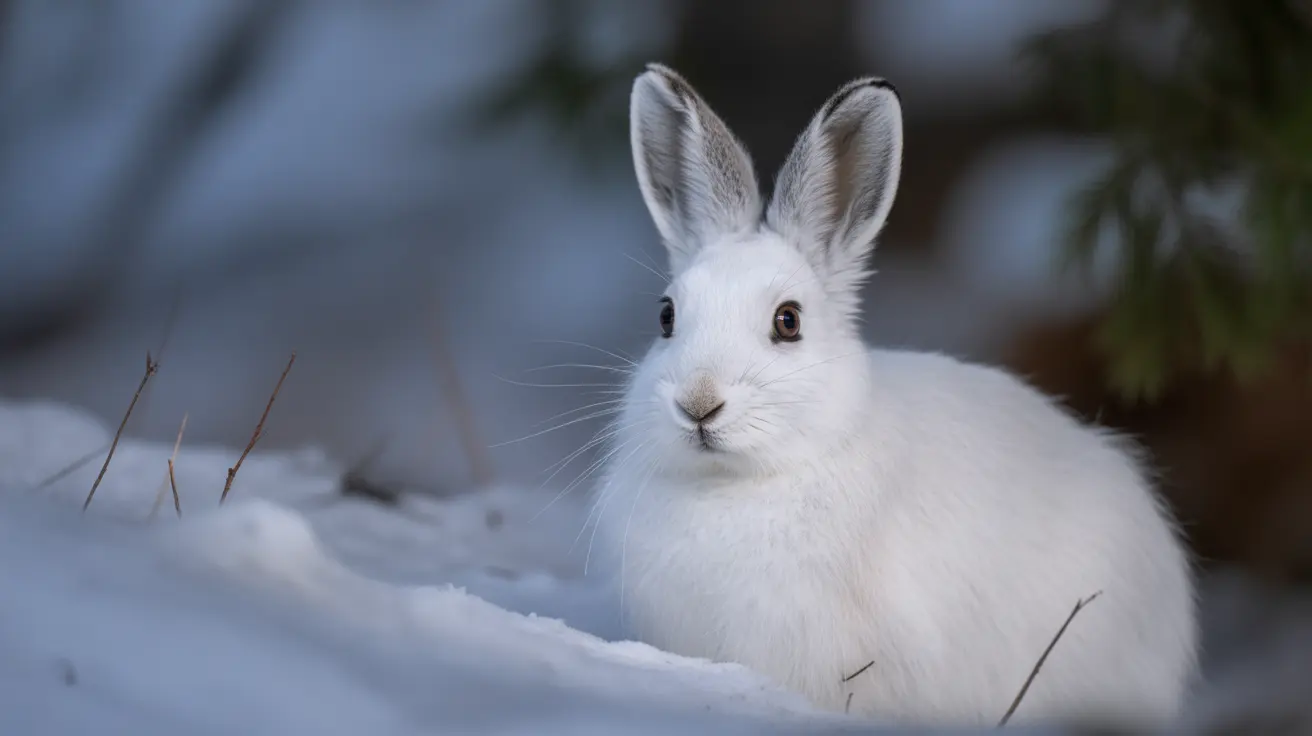Each year, Minnesota animals face one of nature's greatest challenges: surviving brutal winters with temperatures plummeting well below zero and snow cover lasting for months. These remarkable creatures have evolved extraordinary Minnesota winter animal adaptations that allow them to thrive in conditions that would challenge even the hardiest humans. From dramatic physiological changes to clever behavioral strategies, wildlife across the North Star State demonstrates nature's incredible ability to adapt and survive.
Understanding how local animals prepare for winter not only fascinates nature lovers but also provides valuable insights for pet owners whose outdoor cats, dogs, and backyard wildlife visitors face similar seasonal challenges. These natural survival strategies offer lessons in resilience and preparation that can inform how we care for our own animals during harsh Minnesota winters.
Hibernation in Minnesota Wildlife vs. Torpor: Nature's Energy-Saving Strategies
Many people assume that most animals simply "hibernate" through winter, but the reality is far more complex. True hibernation in Minnesota wildlife occurs in relatively few species, including ground squirrels and some bat populations. During hibernation, animals enter a deep sleep-like state where their body temperature drops dramatically, heart rate slows to just a few beats per minute, and breathing becomes barely detectable.
More common is torpor, a lighter form of dormancy that allows animals to conserve energy while remaining somewhat responsive to their environment. Bears, often mistakenly thought to hibernate, actually enter torpor during their winter denning period. This adaptation allows mother bears to give birth and nurse cubs while still maintaining some level of awareness of potential threats.
Animal Migration Minnesota: The Great Winter Exodus
Animal migration Minnesota patterns showcase one of nature's most impressive survival strategies. Thousands of bird species undertake epic journeys southward as daylight hours shorten and food sources become scarce. Common migrants include robins, warblers, and most waterfowl, who follow ancient flyway routes that have guided their species for millennia.
However, climate change effects on bird migration Minnesota are becoming increasingly apparent. Warmer temperatures are causing some species to delay their departure or attempt to overwinter in areas where they previously wouldn't survive. This shift creates both opportunities and challenges for local ecosystems and the pet owners who enjoy watching backyard birds.
Minnesota Birds Winter Survival: Year-Round Residents
Not all Minnesota birds flee south for winter. Hardy species like chickadees, nuthatches, and woodpeckers have developed remarkable adaptations for Minnesota birds winter survival. These resilient birds grow denser feather coats, cache food throughout the fall, and often engage in communal roosting birds Minnesota behavior, huddling together in tree cavities to share body heat during the coldest nights.
Cardinals, blue jays, and other year-round residents also demonstrate food caching animals Minnesota behavior, storing seeds and nuts in bark crevices and other hiding spots throughout their territory. This natural pantry system helps them survive when fresh food sources become buried under snow.
Minnesota Mammals Winter Coat Development and Behavior Changes
Mammals across Minnesota undergo dramatic physical transformations as winter approaches. The development of a Minnesota mammals winter coat is perhaps the most visible adaptation, with animals growing thicker, denser fur that provides crucial insulation against sub-zero temperatures.
White-tailed deer winter behavior includes forming larger herds and seeking shelter in dense woodland areas called "deer yards," where they conserve energy by moving less and sharing body heat. Meanwhile, the snowshoe hare camouflage transformation is one of nature's most remarkable adaptations – their brown summer coats gradually turn white, providing perfect camouflage against snow-covered landscapes.
Beaver Lodge Winter Survival and Aquatic Adaptations
Beaver lodge winter survival represents one of nature's most impressive engineering feats. These industrious mammals spend fall months reinforcing their lodges and stockpiling food underwater, creating caches of branches and bark that remain accessible even when pond surfaces freeze solid. River otter winter habits include maintaining breathing holes in ice and traveling between water bodies through snow tunnels, demonstrating remarkable adaptability to changing conditions.
Winter Feeding for Birds Minnesota: Supporting Local Wildlife
For pet owners and nature enthusiasts, understanding winter feeding for birds Minnesota provides opportunities to support local wildlife through challenging months. Offering high-energy foods like suet, sunflower seeds, and peanuts can make a significant difference for birds struggling to find adequate nutrition during harsh weather.
Frequently Asked Questions
How do Minnesota animals survive the extreme cold and food scarcity during winter?
Minnesota animals employ multiple survival strategies including growing thicker fur coats, entering hibernation or torpor states, migrating to warmer climates, caching food supplies, and changing behavior patterns to conserve energy and maintain body heat.
What are the differences between hibernation, torpor, and brumation in Minnesota wildlife?
Hibernation involves a deep, prolonged sleep with dramatically reduced body functions, while torpor is a lighter dormancy state allowing some awareness. Brumation is similar to hibernation but occurs in cold-blooded animals like reptiles, involving reduced activity rather than true sleep.
How can I help local wildlife survive Minnesota winters in my backyard?
Provide consistent food sources through bird feeders, offer fresh water when possible, create shelter opportunities with brush piles or nesting boxes, and avoid disturbing animals' natural winter refuges. Always research species-appropriate foods and feeding practices.
Minnesota's wildlife demonstrates that with proper preparation and remarkable adaptations, even the harshest winters can be survived. These natural strategies remind us of the importance of seasonal preparation for all animals – including our beloved pets – when facing challenging weather conditions.






